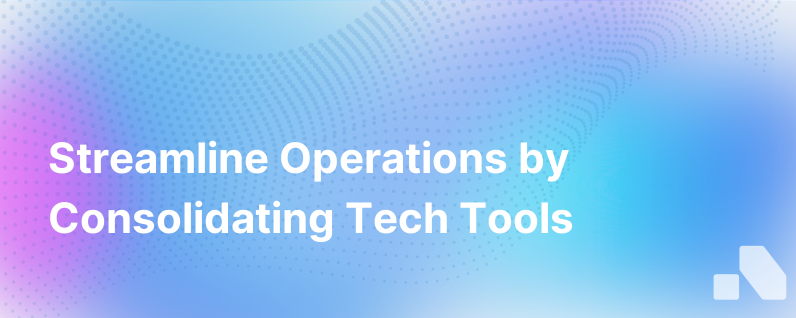
In today’s hyper-competitive business environment, the promise of technological advancements has been largely realized through a proliferation of digital tools designed to tackle just about every conceivable business function. Whether it’s managing customer relationships, tracking online analytics, automating marketing campaigns, or facilitating team collaboration, there appears to be an app or service for everything. However, this abundance isn't without its pitfalls.
Businesses, especially SMBs (Small and Medium-sized Businesses), often find themselves tangled in a web of SaaS subscriptions and software licenses, each serving narrow, siloed purposes. This technological sprawl not only creates operational inefficiencies but also strains financial resources. It’s analogous to a carpenter’s workshop cluttered with so many specialized tools that it becomes challenging to find the right hammer or saw for the job at hand.
Consolidating tech tools, just like organizing that metaphorical workshop, clears clutter, streamlines operations, and saves precious dollars—a necessity for businesses scrutinizing every expense in a bid for profitability and scalability.
The High Cost of Technological Overkill
For many organizations, tech tool proliferation creeps in insidiously. A marketing team might subscribe to a suite of tools for email automation, another for social media scheduling, and yet another for SEO analysis. The sales team, on their part, could be juggling a CRM system, a separate tool for sales automation, and perhaps a different platform for meeting scheduling. Add in collaboration tools, customer service software, and project management platforms, and you have a recipe for redundancy, not to mention a hefty monthly invoice for overlapping services.
Maintaining such an array of distinct tools can lead to several key challenges:
- Financial Inefficiency: Separate subscriptions can lead to duplicative costs, particularly where features overlap.
- Operational Complexity: Training on and managing multiple systems consumes time and can overwhelm users, leading to lower adoption and usage rates.
- Data Silos: Disparate systems often mean disconnected data streams, complicating efforts to track and analyze business metrics holistically.
- Security Vulnerabilities: Managing a multitude of tools can lead to weaker oversight and increased risks for data breaches.
- Decreased Productivity: The time spent toggling between different platforms and interfaces detracts from core work functions.
The Case for Consolidation
Amid the myriad challenges presented by tool sprawl, organizations are now recognizing the benefits of consolidation. Here’s what consolidation can promise:
Financial Agility
By reducing the number of tools in your tech stack, your business can significantly reduce software costs. Bundled services or all-in-one platforms frequently offer cost savings compared to the cumulative expense of several niche products.
Operational Streamlining
Training staff on one comprehensive tool, rather than several disparate ones, can result in shorter onboarding times and higher proficiency. Employee experience is improved when tools are intuitive and integrated, enhancing overall job satisfaction.
Harmonized Data
A consolidated tech ecosystem naturally leads to unified data repositories, streamlining analysis, and strategic planning. Access to centralized data allows for robust reporting and better decision-making.
Security and Compliance
Fewer tools mean a simplified security landscape. It's more manageable to monitor a single platform for vulnerabilities than to keep tabs on a patchwork of solutions, each with its own set of security protocols.
Productivity Gains
Time is a scarce commodity in every business. Centralized platforms can dramatically reduce time expenditures on mundane tasks like switching between systems or reconciling data from different sources.
Steps to Consolidating Your Tech Stack
Embarking on a tool consolidation journey requires a strategic approach. Employing the following steps can ensure a smooth transition and greater success.
-
Audit Existing Tools: Create an inventory of all software tools currently in use. Identify redundancies, underused platforms, and any gaps that need to be filled.
-
Evaluate Needs and Usage: Analyze how your team uses existing tools. Gather feedback on what features are essential, which ones are nice-to-have, and what’s missing from the current lineup.
-
Research and Select Unified Solutions: Look for integrated tools that combine the essential functions of several separate platforms presently in use. Evaluate cost, scalability, customer support, and ease of integration with any remaining standalone tools.
-
Calculate ROI: Evaluate the potential return on investment of a unified tool. Consider not just the direct cost savings but also the indirect benefits, such as increased productivity and improved security.
-
Plan for Transition: Develop a detailed plan for phasing out legacy tools and onboarding the new platform. This plan should include staff training, data migration, and a timetable for the changeover.
-
Monitor and Adjust: After implementation, track usage and performance closely. Be ready to make adjustments as necessary to ensure the new tool delivers on its promise.
Ending Note
In an era where technology is central to business efficiency and success, tool sprawl can inadvertently lead to wastage and lost productivity. Consolidating tech tools is a prudent strategy to streamline operations, enhance data integrity, and actualize cost savings. By carefully selecting integrated solutions and guiding your team through a thoughtful transition, your business can re-focus on core objectives and drive growth with renewed vigor.
In closing, remember that consolidation doesn’t mean settling for the lowest common denominator; it means elevating your tech ecosystem to be as multifaceted and dynamic as your business requires, without the excess baggage. A more efficient, agile, and cost-effective future awaits.